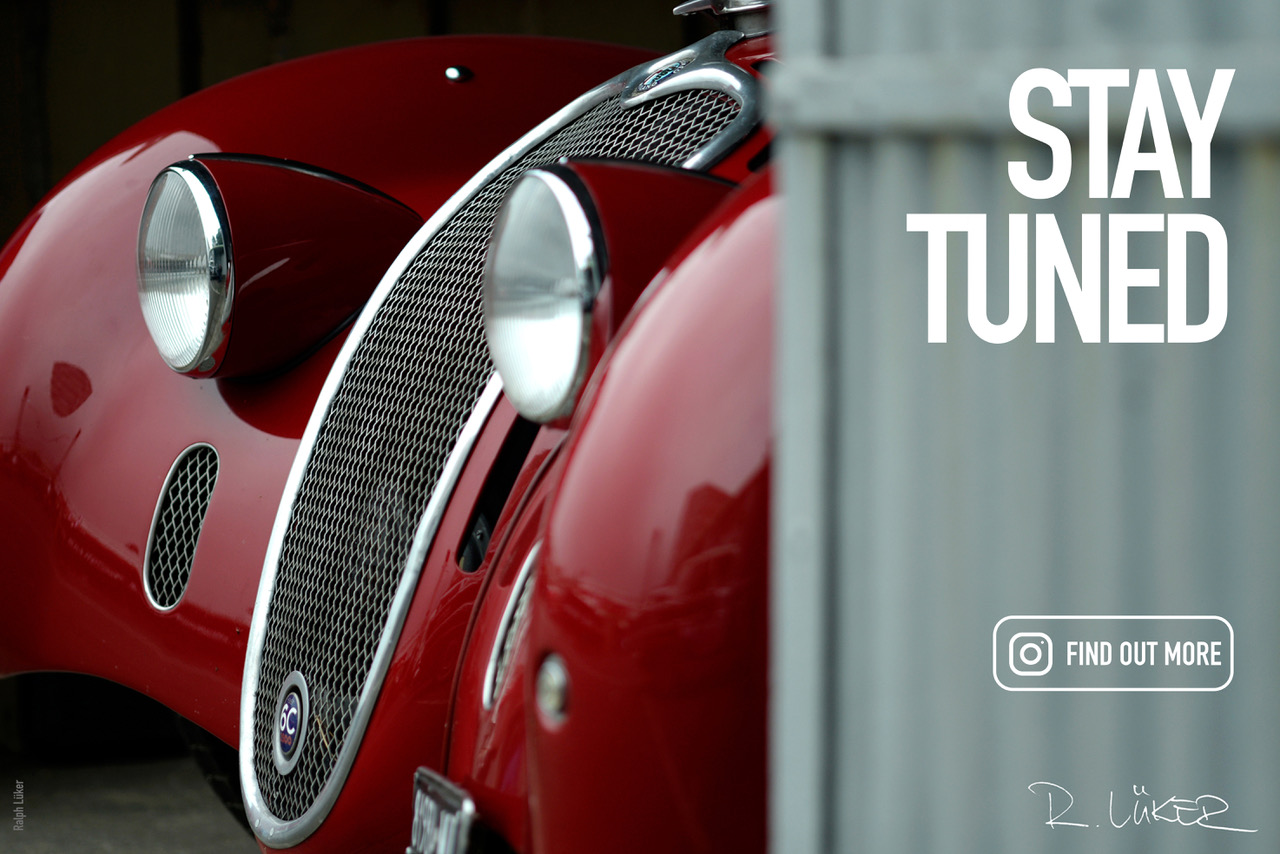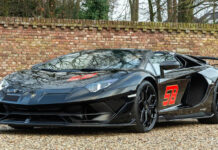Ascott Collection is offering this Porsche 917 K81 for sale. The last Porsche 917 ever built and entered in the 24 Hours of Le Mans. Driven by Bob Wollek and Henri Pescarolo. A unique car with a clear and indisputable history. Engine overhauled. Eligible for competing in the Classic Endurance Racing and the Le Mans Classic Plateau 6.

The Kremer brothers hold a special place in the great family of preparers and other teams that put Porsche in the limelight of motor racing. Believe it or not, in 1979 these wizards managed to beat the official works cars at the 24 Hours of Le Mans with a modified, unbridled 935 (the 935 K3, which they went on to sell more than half a dozen copies of). Their ultimate challenge was to win the 1995 edition of the 24 Hours of Daytona with a K8, basically a roofless 962, beating the favorites of the time, the Ferrari 333 SPs! In 1981, Erwin and Manfred Kremer came up with another idea that has gone down in history as a singular and daring initiative. They resuscitated the 917 to enter it for racing at the start of the 1980s, with the ambition of shaking up the existing Groups 5 and 6 and acquiring a new crown at Le Mans just before Group C came into being. Unfortunately, their venture was not crowned with the same succes as they had achieved two years earlier with the 935 K3. But both the technical challenge and the human adventure of the 917 K81 have become the stuff of legends. This is the story of the last Porsche 917 ever built, unique in many respects, that Ascott Collection is today offering for sale.
1981, the ideal year to make a play for the 24 Hours of Le Mans
For endurance prototypes, 1981 was a year of transition. While the Group C regulations were yet to come into force (in 1982), they spelled an imminent end for Groups 5 and 6. They were still being used but with Group C set to reshuffle the pack, no one – and in particular, no major manufacturer – was doing any ultra-advanced development work. Numerous competitors thus had the chance to shine. The outcome of this 49th edition of the 24 Hours of Le Mans was truly up for grabs.
While in the past Porsche had proved to be dominant, Renault’s success in 1978 and, above all, Rondeau’s triumph in 1980 were a source of inspiration for outsiders. The Kremer brothers’ victory had also changed people’s mindsets. Both “small” teams and major constructors flocked to compete at Le Mans. At the time, anything that could be driven and that conformed to one of the Fédération Internationale de l’Automobile’s “Groups” was entered. The 1981 edition was consequently wide open, making any sort of prediction very tricky before the first practice sessions.
In 1981, there were very few new cars already designed for Group C – only the two WM P81s, in fact, which had already been approved in advance. The forces present at Le Mans were hence made up mainly of existing models. The Le Mans race was so demanding that the best candidates were cars that were already old hands there. The most striking example of this was offered by Porsche wheeling some 936s out of retirement and hastily fitting them with new, more powerful engines. The German clan again included some 935s, with some Ferrari 512 BBs also taking the start line for a galant last stand. Roundeau too signed up again, with five cars and support from Ford.
While 1981 was thus mainly a case of trying to “put new wine into old wineskins”, there were also some signs of novelty and, above all, some first timers. This was the case with the Lola T600, the first ground effect prototype, which foreshadowed the advent of Group C. It was a radically modern car, which is also offered for sale by Ascott Collection. The 917 K81 was, in its own way, also a novelty. The 917 was certainly no youngster, but beneath its yellow livery and its clearly visible Malardeau markings, the chassis that arrived at Le Mans was brand new. It was not an “old” 917, but a car that was assembled for the occasion, with no previous racing appearance. To be able to see this racing legend once again in 1981, whatever the modifications it had undergone, was a true communication coup, in addition to being a passion-driven project.
The birth of the 917 K81
The “official” career of the Porsche 917 stretched from the preliminary practice sessions for the 1969 edition of the 24 Hours of Le Mans, with the first cars driven by Hans Herrman and Rolf Stommelen, up till the end of the 1972 season in the Interseries, with David Piper entering one car. The 917s were then excluded from European competitions (which prohibited engines over 3.0 litres), but found a second youth in the United States.
There, the already very successful 917 became the 917 Can-Am. It was a veritable racing machine which evolved over the years, from 1969 to 1973, with the 917.10, 917/20 and 917/30 types. The last named, with its 5.0-litre V12 engine with 12 flat cylinders and two large turbochargers, developed over 1000 horsepower! At the end of 1973, the organizers imposed fuel limits, thereby signalling the end of the 917s’ American career.
When Erwin Kremer visited the Midlands Motor Museum in the late 1970s, he discovered there Pedro Rodriguez’s former car (chassis 917-13)[i]. Several sources state that it was on seeing this car, there in the aisles of the museum, that the idea of resuscitating the 917 occurred to him. After all, the 917’s competition career had been fairly short and, above all, had been stopped by regulations relating to engine power. But with the return of greater freedom, the 917 once more became eligible, or very nearly so… Kremer then started to collect 917 parts and approached Porsche, which gave him access to the original 917 plans! It quickly became clear that the 917 needed to be “updated” to be able to race with the new tyre compounds.
The Kremer brothers were thus not just going to build another 917. They were going to create the most modern 917 of all, with unique upgrades.
Converging ambitions made this “new” 917 project dreamt up by the Kremer brothers a candidate for the 1981 edition of the 24 Hours of Le Mans. Alain Beraut, the sports director of the Automobile Club de l’Ouest (ACO) at the time, is said to have got wind of the project for this 917… and suggested to the Kremer brothers that they should enter it at Le Mans. After all, since, as Ascott Collection has seen, the 1981 edition was a transition year with a starting lineup that was somewhat lacking in appeal, bringing back a lengendary model backed up by the reputation of the Kremer brothers was a sound advertising ploy. Some even saw the car as the favorite for victory on paper, such was the enduring benchmark the 917 had become!
Before going any further, one point needs to be be clarified: as surprising as it may seem, it was perfectly possible to enter a 917 for the 1981 edition of the 24 Hours of Le Mans in terms of the regulations in force. Even though the car was based on an architecture that was 12 years old, engines over 3.0-litre capacity – which were banned as of 1972, thereby contributing to the disappearance of the model – were authorized once again. The new 917 could therefore be fitted with a powerful V12 engine : it certainly wouldn’t have been worth entering this heavy prototype with a small engine. This regulatory loophole signalling the return of over-3.0-litre engines to allow manufacturers to test them with the imminent arrival of Group C in mind, probably contributed to giving the green light to this modernized 917 project. This was the case for both the ever-smart Kremer brothers and for Porsche. This may even have been the starting point of their thinking, though it’s impossible to know this for sure.
The technical elements of the 917 K81
10 years after the end of its career, it was impossible to enter the 917 for racing as it stood. Modifications were necessary, both to meet the safety requirements imposed by the regulations, and to adapt to new technologies, and in particular to tyres and their compounds which had made great progress in the ensuing decade.
It was the stamina of the chassis and the geometry of the suspensions that concerned the Kremer mechanics. After being reinforced with more and larger tubes, the tubular structure now weighed 65 kg. It was thus 15 kg heavier than the original frame. But this effort to reduce torsion was indispensable. The added tubular diagonals were there to absorb the forces exerted on the chassis, which the Kremer brothers expected to be much greater than in the 1970s. Both at high speed and in bends, the 917 had to be able to “take” the improved performance of the new tyres. The total weight of the car when presented for technical inspection was 893 kg, compared to 850 kg for the original 917K. So finally, this new 917 wasn’t so heavy as all that! In their heyday, the 917 LHs averaged around 900 kg. Braking was improved by adopting the brakes from the Porsche 917 Can-Am.
And what about the aerodynamics? There again, an update was in order. The slightly crude body shape was hastily transformed into something altogether rounder, and significant change were made to the volume of the 917 to make it more “enveloping”. The two rear fins now served as uprights for an imposing spoiler which hadn’t been seen before. It was the front that underwent the greatest changes, but the side view too showed a revised, more massive car. The car’s ground clearance was also lowered. Everything was done to give the car more grip.
In short, almost everything was redesigned, apart from the windshield and the doors. Much thought went into the car’s road holding and cornering capabilities… but all these aerodynamic solutions were purely theoretical at the time. No real troubleshooting or wind tunnel testing was organized. It was at the Nürburgring, a few days before Le Mans, that the 917K81 was first rolled out to be presented to the press.
With the exception of the – numerous – structural and aerodynamic modifications, the car was basically the same as in the early 1970s. It was still equipped with the 5-litre Type 912 flat-12 air-cooled engine, which now developed around 570 horsepower. This engine was mated to a 5-speed manual gearbox developed in-house by Porsche.
The mechanical side also deserves more than a mention. Porsche gave discreet support, providing two engines: the 5.0-litre engine of 1971 and the 4.5-litre engine of 1970. Both versions of the Type 912 engine had their own strengths and weaknesses. The 4.5-litre flat-12 was the one that powered the 917 at the start of its career, and the 5.0-litre was the one that fitted the final iterations. While the second option was obviously more powerful, it was also thirstier. Taking into consideration the particular needs of the Le Mans circuit with its long straights, the Kremer brothers naturally opted for power over economy. Producing around 600 horsepower, the large 5.0-litre engine was mated to the five-speed gearbox. But after the practice sessions, the decision was made to switch to the 4.5-litre engine… The 917 K81 hence drove at Le Mans with both engines.
Too short an adventure in the race itself
The car, dubbed the Porsche 917 K81, was heralded as one of the favorites along with the works Porsche 936s and the Rondeau M379s. With its “K” this time referring to Kremer and not to Kurzheck (short tail), the 917 was as much an attraction for racing enthusiasts when it arrived at Le Mans as it was a curiosity for the press of the time. People started to get carried away. With the combination of the Kremer brothers’ know-how, the excellent 917 base, and the magic of Le Mans, who could know whether this comeback might not not turn out to be victorious? But the Le Mans week didn’t exactly go off as planned….
First of all, the 917 K81 had to change categories. Its registration in the GTP category was rejected, the distance between the pillars of the windshield being deemed too large, and thus non-compliant. Changing this element was impossible. So, using the wizardry of the time, a small axial opening was made in the roof, above the driver’s seat. In the eyes of the organizers, the now (very slightly) opened 917 K81 thereby became a Spyder. It therefore switched to this category.
The track quickly delivered its verdict. The simulations done by the Kremer team on a computer gave a theoretical lap time of 3:30. This time was never achieved though. The fault was to be found in the upgrades that were specific to this new 917. Its new, enveloping body didn’t allow the engine block to breathe as it needed to (remember that the flat 12 was air-cooled…). The spoiler made the car safer in the straights, with less “play” from the rear… but also a lot slower. Designed for improved grip and faster cornering, the 917 K81 had a hard time on the Mulsanne Straight. The speedometer failed to go beyond 300 km/h, and generally topped out at 290 km/h. It was a poor performance compared with the original 917, which reached 340 km/h on this route nationale section.
Attempts were made to improve the car’s performance by making a few incisions in the body, but nothing worked. Lapping in 3:46.540, Bob Wollek managed to qualify the car in 18th place, and 9th in its category. The race itself was no more successful.
After being in the top 10 in the early stages of the race thanks to Bob Wollek’s efforts, the 917 steadily lost ground, lap after lap. Successive stints by Guy Chasseuil and Xavier Lapeyre caused the car to drop below the 20th place. Chasseuil then ran out of fuel and only managed to get the yellow monster back to the pits by pushing it, passing out a few minutes later. Early in the evening, Lapeyre spun off at the Ford corner, damaging the 917’s rear end. Despite a repair that took more than 30 minutes, an oil leak finished off the engine… and the car was forced to retire. If the adventure had been more glorious, with a new victory for the Kremer brothers, there’s no doubt that this 917 K81 would now be in the hall of fame of Porsche, which would total 20 victories at Le Mans.
Another attempt was made at the 1000 km of Brands Hatch. The Porsche 917 K81 was very fast. Bob Wollek, this time associated with Henri Pescarolo, led the race after starting from 3rd place on the grid. But after 52 laps, a suspension problem put paid to the two Frenchmen’s efforts. After that, the 917 K81 was no longer entered in competition. Which is a shame, because the performance was there.
A crystal clear history
After being preserved by private collectors, the 917 K81 was acquired by its current owner in 2011. Throughout this period, it was maintained by Crubilé Sport, which has developed extensive experience in the maintenance of Porsche 917s. Its owner has regularly taken part in track day events without ever entering it in historic competition. It made a striking return to the 24 Hours of Le Mans paddock during the 2014 Le Mans Classic, where it was invited to take part in the Le Mans HeritageClub competition and was awarded the Special Jury Prize.
This Porsche 917 K81 is a singular car that has kept its original chassis and has never been over-restored. It is in perfect working order and its engine has recently been overhauled (invoices available for inspection).
Ascott Collection is proud to offer for sale the last Porsche 917 to be built, whose origin and authenticity are indisputable. The K81 is a unique specimen that could make a remarkable comeback at Le Mans, since it is eligible for the Le Mans Classic Plateau 6 event.
Click here for further information
collectorscarworld is partnering with the most renowned classic car specialists and dealerships in the world. We always offer selected rare and sought-after collectors cars and supercars for sale and every day a special car is featured for one of our partners. The passion for classic cars is diverse, sometimes it concerns the beauty of forms that can be admired at a concours, sometimes it is the smell of rubber , old leather and gasoline at a racing event or trip in the sunset.
Or its a classic car you have great memories with or which your parents owned a longtime ago. Classic cars and supercars are an expression of the lifestyle that someone shares with other petrolheads, and which is immortal, enduring and always a lot of fun. If you are looking for a special car or need support in the evaluation and history of cars, please contact us at info@collectorscarworld.com

















